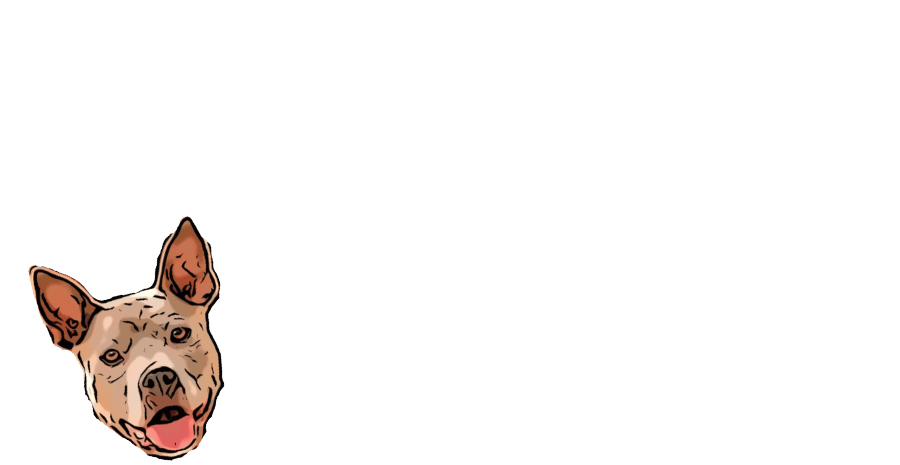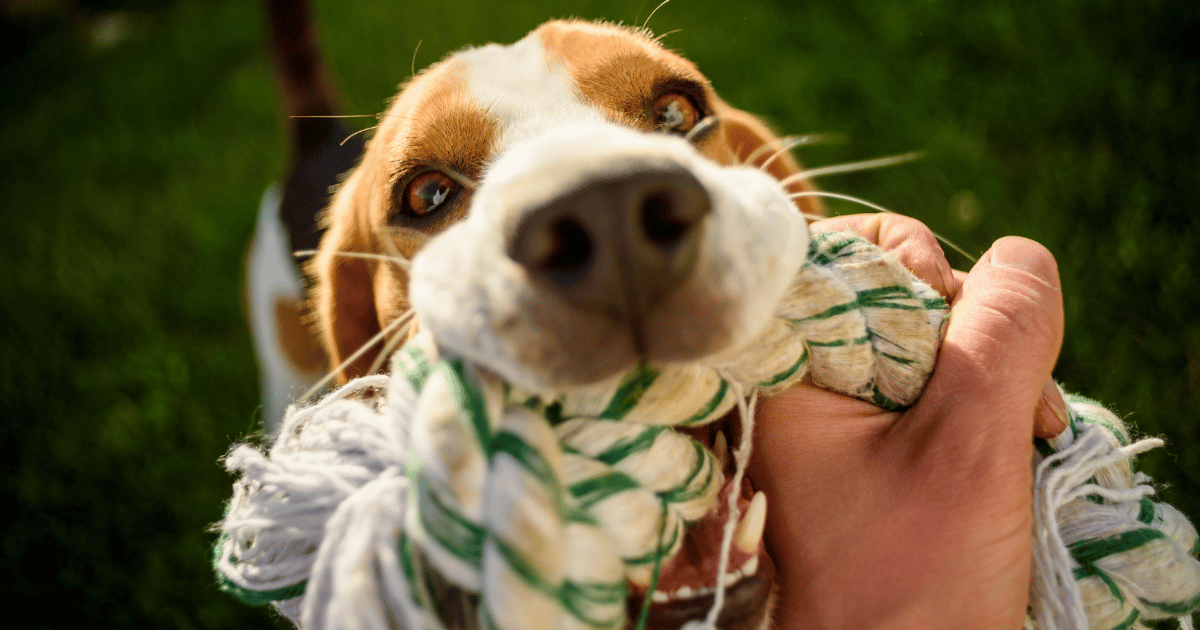Most guardians know whether their dog likes fetch or tug. But play style goes much deeper than favorite games—it reveals how your dog's brain naturally engages with the world and what types of mental stimulation truly satisfy them.
Understanding your dog's play style isn't about labeling them or limiting their experiences. It's about recognizing their cognitive preferences so you can provide enrichment that genuinely meets their needs and helps them thrive.
The Four Primary Play Styles
🏃 Chaser: Movement-Driven Engagement
What it looks like:
Chasers are visually stimulated and motivated by movement. Think of dogs with prey drive or herding instincts. These dogs light up when something moves—balls, frisbees, remote-control toys, even shadows or reflections.
What it reveals about their needs:
Chasers need opportunities for fast-paced, visually engaging activities that allow them to track, pursue, and "capture" moving objects. Their brains are wired for motion-based problem-solving.
Enrichment examples:
- Flirt poles and chase toys
- Fetch variations with unpredictable bounces
- Bubbles or flying disc games
- Lure coursing or agility activities
🔍 Forager: Scent-Driven Discovery
What it looks like:
Foragers are nose-first explorers. They're motivated by search, discovery, and using their powerful olfactory system to problem-solve. These dogs would rather sniff every blade of grass on a walk than run full speed through the park.
What it reveals about their needs:
Foragers need opportunities to use their nose in purposeful ways. Scent work isn't just fun for them—it's cognitively satisfying and emotionally regulating. Their brains crave search-and-find challenges.
Enrichment examples:
- Snuffle mats and scent puzzles
- Hide-and-seek games with treats or toys
- Outdoor sniffari walks (letting them lead with their nose)
- DIY foraging boxes with hidden rewards
🦴 Chewer: Tactile Manipulation
What it looks like:
Chewers need to gnaw, shred, tear, and manipulate objects with their mouth. This isn't destructive behavior—it's a natural stress reliever and cognitive outlet. These dogs are happiest when they have something appropriate to work on with their teeth and jaws.
What it reveals about their needs:
Chewers need safe, appropriate outlets for oral engagement. Chewing releases endorphins, reduces anxiety, and provides sensory satisfaction. Suppressing this need often leads to inappropriate chewing on furniture, shoes, or other household items.
Enrichment examples:
- Durable chew toys (nylon, rubber, natural wood)
- Shredding activities (cardboard boxes, paper bags filled with treats)
- Frozen enrichment toys (stuffed Kongs, frozen broth blocks)
- Bully sticks, yak chews, or other long-lasting natural chews
🧸 Cuddler: Connection-Driven Play
What it looks like:
Cuddlers are motivated by interaction and bonding with their guardian. They prefer gentler, cooperative activities and thrive on shared experiences. These dogs often carry toys to you, enjoy tug games with give-and-take, and love plush toys they can "care for."
What it reveals about their needs:
Cuddlers need enrichment that strengthens the dog-human bond. They're less interested in solo activities and more engaged when you're actively involved. Their cognitive satisfaction comes from connection and cooperative play.
Enrichment examples:
- Interactive tug games with rules and turn-taking
- Trick training and learning new skills together
- Gentle puzzle toys you solve as a team
- Plush toys for carrying, nurturing, or gentle play
Most Dogs Are a Combination
It's important to note: most dogs exhibit more than one play style. Your dog might be a forager-chewer or a chaser-cuddler. The goal isn't to put them in a box—it's to recognize their dominant preferences so you can provide varied, satisfying enrichment.
How to Conduct a Play Style Preference Test
The best way to understand your dog's play style is through observation and simple preference testing. This isn't a formal assessment—it's a low-pressure way to see what genuinely engages your dog when given choices.
What You'll Need:
- A variety of toys and activities representing different play styles:
- Chaser: Ball, tug rope, or toy on a string
- Forager: Treats hidden in a towel or cardboard box
- Chewer: Durable chew toy or cardboard to shred
- Cuddler: Plush toy or interactive game you play together
- A quiet, familiar space with minimal distractions
- 15-20 minutes of uninterrupted time
- A notepad to record observations
Step 1: Set Up the Environment
Place all the toys and activities in a neutral area where your dog can access them freely. Spread them out so no single item is more prominent than the others. Sit nearby but don't direct your dog toward any specific option.
Step 2: Observe Without Interference
Let your dog explore the options on their own. Resist the urge to guide them or encourage interaction with any particular item. Your job is to observe, not direct.
Watch for:
- Which item they approach first
- How long they engage with each option
- What type of interaction they choose (sniffing, chewing, chasing, bringing to you)
- Their body language (relaxed and focused vs. brief interest)
- Whether they return to the same item multiple times
Step 3: Note Engagement Quality
It's not just about which toy they pick up—it's about the quality of engagement.
High engagement looks like:
- Sustained focus (several minutes of interaction)
- Relaxed, purposeful body language
- Repeated return to the same activity
- Deep absorption (they're "in the zone")
Low engagement looks like:
- Brief sniff or touch, then moving on
- Distracted or disinterested body language
- Picking something up and immediately dropping it
Step 4: Repeat on Different Days
Conduct this preference test 2-3 times over the course of a week. Dogs can have different energy levels and moods, so multiple observations give you a clearer picture of their true preferences.
Step 5: Analyze the Patterns
After several sessions, review your notes:
- Which activities did they return to most consistently?
- Where did you see the deepest engagement?
- Did they combine activities? (For example, foraging for a toy and then chewing it)
- What did they ignore completely?
These patterns reveal your dog's dominant play style(s).
What to Do With This Information
Once you understand your dog's play style preferences, you can:
Provide targeted enrichment that genuinely satisfies their cognitive needs rather than guessing what might work.
Reduce frustration and destructive behaviors by offering appropriate outlets for their natural drives.
Deepen your bond by engaging with your dog in ways that align with how their brain naturally works.
Make informed decisions about toys, activities, and training approaches that honor their individuality.
A Few Important Notes
Play style can evolve. Puppies, senior dogs, and dogs recovering from illness or trauma may show different preferences at different life stages. Revisit preference testing periodically.
Context matters. A dog might be a chaser outdoors but a cuddler indoors. Pay attention to environmental factors that influence engagement.
All styles are valid. There's no "best" play style. A chewer isn't more difficult than a forager; a cuddler isn't less active than a chaser. Each style reflects natural cognitive preferences that deserve to be honored.
Variety still matters. Even if your dog has a dominant play style, offering diverse enrichment prevents boredom and supports cognitive flexibility.
Final Thoughts
Understanding your dog's play style is an ongoing journey of observation and discovery. The more you learn about what engages them, what satisfies them, and what brings them joy, the better equipped you are to help them thrive in a world designed for humans.
This isn't about fixing problems or managing behaviors. It's about understanding who your dog is and what they need—and using that knowledge to strengthen your bond and support their wellbeing.
So grab a few toys, set aside some time, and start observing. Your dog has been showing you their preferences all along. Now you're learning to listen.
Want to dive deeper into play style-based enrichment? Join our waitlist here and receive 10 Fall Activities to Do With Your Dog—plus early access when our next box opens.

